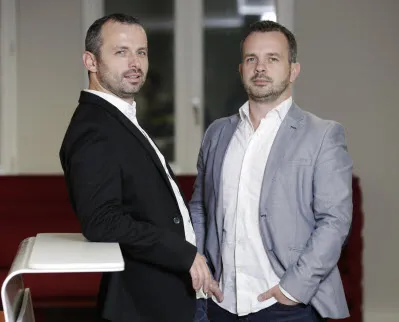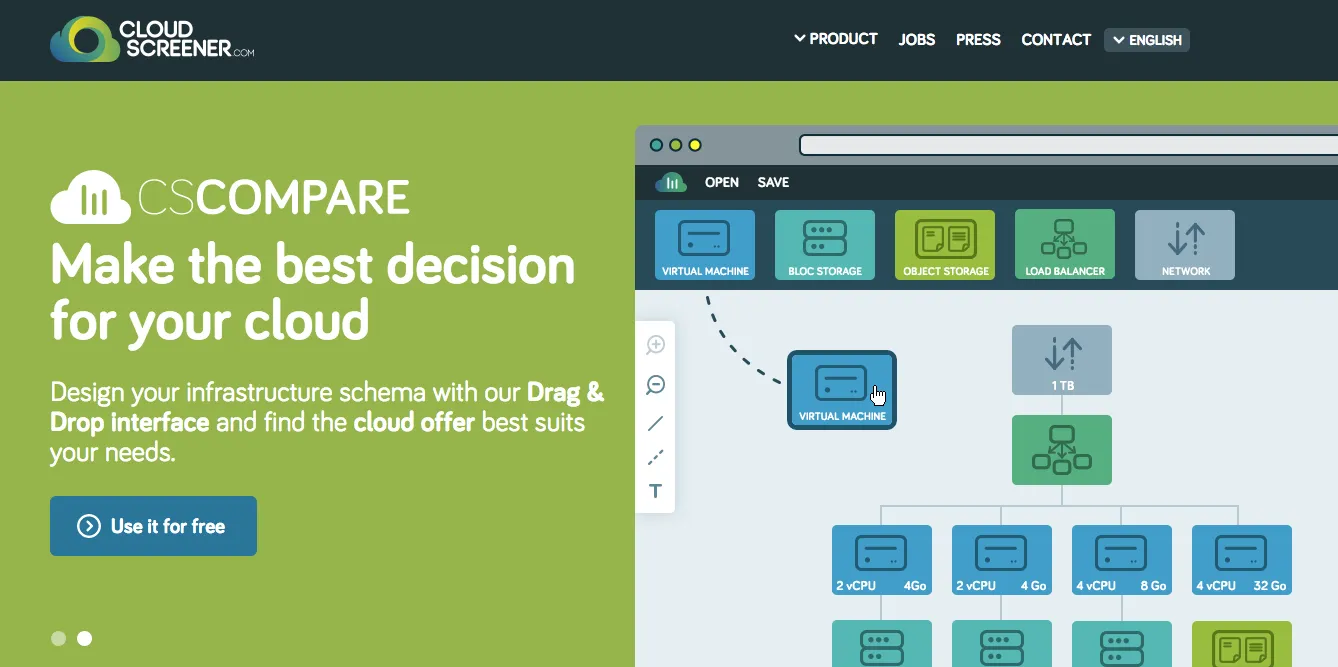
Lean Startup Adventure, day 6: Problem interview with CloudScreener

Previously in our Lean Startup Adventure, Yann designed a Problem Interview script to maximize learning when we meet out first potential customers. At that time, we don’t have a working prototype or anything - we’re just trying to make sure we’re addressing a problem that matters.
We will first interview the two founders of a French startup called CloudScreener.
Who Is CloudScreener?
CloudScreener is marmelab’s first customer. We’ve been working with them for about two and a half years, which means we know them and their business very well. They started as a comparator for cloud hosting solutions, at a time when AWS had about 80% of market share, and all their competitors would try aggressive pricing techniques to grab their share.
For SMEs, comparing IaaS offers used to be impossible, because there was no objective data about security, performance, features, and pricing putting face-to-face AWS, Azure, Google Cloud Platform, Rackspace, etc.
CloudScreener recently pivoted towards a cloud decision engine, as their product (cloudscreener.com) emphasizes a “cloud builder” which is kind of like Visio for cloud architectures, except with a live pricing of the solution.
We choose to meet CloudScreener’s executive team (Anthony Sollinger, Nicolas Drouet) for our first problem interview, because we know they would be indulgent about our hesitations and lack of assurance in the exercise.

The interview takes place by Skype, because we can’t manage to meet Anthony and Nicolas in person that day. Both use Skype every day, so the interview goes smooth, and we don’t feel any pain related to not actually being in the same room with them.
Documented Interview
The first thing we learn appears right after our introduction. We are talking about our current exploration of data administration tools, and Nicolas asks: “What is data administration exactly?” The term, and the notion behind data administration, doesn’t ring a bell, even for people who actually use an admin tool every day. We knew our terms were hard to sell, but that day we realize that they are just plain wrong.
CloudScreener already use many, many SaaS products. From Trello to MailChimp, including Slack, Basecamp, or Mandrill, they don’t build something that they can pay a small fee for. And for the task related to the administration of their website, they use… phpMyAdmin. Just like we thought, they postponed the development of an admin backend until the time they couldn’t afford to achieve all the admin tasks by hand.
This time seems to have come, since their CTO is planning to build a rails-based admin in the near future, mostly for safety reasons (updating data directly in the database has a strong tendency to break the site immediately). Also, even though Nicolas feels comfortable with phpMyAdmin, Anthony doesn’t manage to even query their business data with that tool. It’s too developer oriented.
As for the idea to link all business tools together, they already found and use an alternative solution: Slack. They’ve added many integrations, and therefore they use Slack as a company timeline, which is enough to let everyone in the company share information.
When asked to rank our 3 problems by order of priority, they reply:
- poor usability
- too many tools
- spend too much
In fact, we understand that the cost of their in-house solution to the data administration problem isn’t closely followed. The cost of the lack of a good tool isn’t estimated either, partly because their service is totally free for now. Even if their website passes offline because of a data administration error, there is no direct consequence in their revenue.
The interview takes about 40 minutes, and CloudScreener is kind enough to accept that we publish it. They agree to meet again once we have something to show.
Takeways
This first interview helps us refine our interview guide. Strangely, we didn’t follow the guide closely that first time, partly because we know our interlocutors very well. After reviewing their responses, we realize that we forgot to ask them a few questions. So we decide to follow our guide more closely the next time.
At the beginning of the interview, Yann spent time introducing our process, talking about Lean Startup and the Problem Interview format. This just served to dilute the attention from the main purpose of the interview, so we decide to omit that point in the future.
This interview validates that there is a pain point around data administration. It is so important that they use alternatives solutions (phpMyAdmin, custom rails admin), but all these alternatives have serious drawbacks (poor UI, or costs a lot).
It doesn’t validate however that the value of a good data administration tool can be estimated in terms of loss. But it can be estimated in terms of developer hours to redevelop it - in which case a SaaS solution will always be cheaper.
But most important, this interview confirms our fear about customer acquisition: the problem we try to solve isn’t identified, estimated, or even named. We’ll have a hard time selling a product to prospects who don’t understand what they can earn with it…
Next Steps
Unless other potential customers validate our assumptions, it’s very probable that we’ll have to find a new angle, a new approach to grab the attention of future customers.
Read the next post of this series to see what we learned from the second Problem interview.
Credits:
Thumbnail picture: The eye of a snow leopard, by Tambako The Jaguar
Authors

Marmelab founder and CEO, passionate about web technologies, agile, sustainability, leadership, and open-source. Lead developer of react-admin, founder of GreenFrame.io, and regular speaker at tech conferences.
